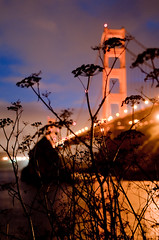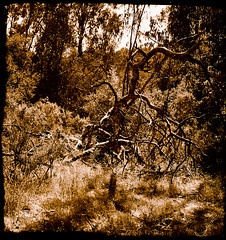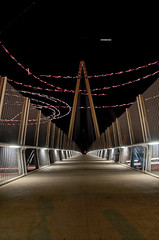CalArts VP-IT: 1 Year In
Yesterday, November 23, 2021, marked my 1 year work anniversary here at the California Institute of the Arts (CalArts), here in southern California (Valencia, to be specific). I’ve observed a lot in this time, many things about CalArts uniquely, and many about art (and design) institutes, more generally. And, of course, I’ve spent a lot of time thinking about myself, my leadership style, and my growth over the past year.
First and foremost, I love it here. It’s been a wild ride, but I work with a great team in IT, am part of an amazing leadership group, and work for a fantastic president, Ravi Rajan, that is supportive and understands technology and its role in higher education success. When we meet (any of the aforementioned groups), we make decisions, we address issues realistically, and we just flat out get stuff done. The faculty are tremendous and exciting to work with, the Deans all get it, and the staff are top rate. Everyone cares about success. I had a personal situation which would have forced me to fly back and forth to northern California each week. My absolute first reactions were “I want to be here” and “I still have work to do.” I never actually considered leaving.
CalArts is a unique place. Truthfully, I find every higher education institution unique in their own way(s). But CalArts is even more unique (yes, I know uniqueness is a binary trait, but I’ll bend the rules a bit nevertheless) than most places, in my estimation and experience. CalArts is still a maturing organization in many ways. We have done things “as they come up” for some time. It is not a disorganized place, but process and procedure remain conceptual rather than actual in many ways, and the place is ripe for business process improvement. Even compared to other institutions in the same vein and of the same age, we have a few challenges. CalArts also has a different structure than most places. Despite being small (1424 FTE), we have 6 fairly independent schools (Art, Critical Studies, Dance, Film/Video, Music, and Theater). There is a “collaborative friction” between the schools’ long-standing independence and the centralized services such as IT. We work together and we have common goals, but there is some tension there that is not to be ignored.
CalArts is an art institute, which presents challenges that are different than other institutions. Some of these are high level – the faculty and students are just wildly creative across the board. At most institutions, maybe 10% of faculty are the “wild” ones with the ideas that challenge centralized organizations such as IT. At an art institute, 100% of faculty fall into this category. And the students follow along in terms of the challenges they present with their ideas and questions. Consequently, many staff that support these individuals can push us as well. Sometimes it’s quite a direct connection – staff X is supporting faculty doing creative work, and they must be just as inventive (and understandably demanding) in getting the resources they need. In other cases its a by-product – student affairs (what we call Student Experience at CalArts) exists within a culture where students won’t wear shoes on a regular basis. So how do we get them to wear ID cards on lanyards as evidence they have been vaccinated? It’s not that Student Experience is supporting the students in their iconoclast nature. It’s the reality of the population they serve. I would suspect that other art and design institutes face similar challenges.
Another, much more “in the weeds” example for IT is the annual computer refresh. I have done this everywhere I’ve been before, and it’s usually pretty straightforward. Prep new machine, centralized documents on old machine, move documents to new machine, install new machine. Voila. At an art institute, however, faculty might have filled their hard drive to the brim with media files, and might have 20 truly specialized software about which we could never know enough to properly support. Sometimes we can’t even figure out how to install and configure the license. But we don’t want to give out administrator-level rights to users, and we find ourselves in a dilemma. How do we handle this efficiently (we’re working on it and perhaps a topic for a future blog post)?
Finally, what about me? What have I learned, in general and about myself?
First, a small institution is a small institution is a small institution. Truth be told, I haven’t run into that many surprises at CalArts compared to other smaller schools I’ve been at. Sure, we have more deferred maintenance on our older building than at Muhlenberg, but it’s about the same as at Menlo. We don’t have the buying power of a larger institution nor the weight to throw around like at a Cal State institution, but that’s nothing new from the smaller schools I’ve been at in the past. We are more selective than other places I’ve been at in the past, and we have a higher profile in many of our metiers. This means that while one company might not want to play ball, another might.
Second, I am finding myself a lot more comfortable in my role. Not complacent nor am I forgetting to challenge the status quo, etc. And I get the jitters now and then and imposter syndrome is always lurking. But, for the most part, when something comes up, I’ve seen something at least somewhat similar in my past, and I can reflect on that experience as I go through the decision-making process on the new one. I might make the same decision, the polar opposite, or something in between. But I have learned, and I think I’ve grown as a leader. For example, we are working on a strategic plan. The last time I tried to do this, I simply bit off more than I could chew; I was too ambitious and tried to write the greatest plan ever. This time, I’m really focused in on one theme, and zeroing in on how we can make an impact within those boundaries.
On the one hand, it’s only been a year. You can lay the groundwork for things in that time, but it’s hard to have everything achieve lift-off. On the other, we have accomplished a lot in this time, and I look forward to what we can do over the next 12 months.







